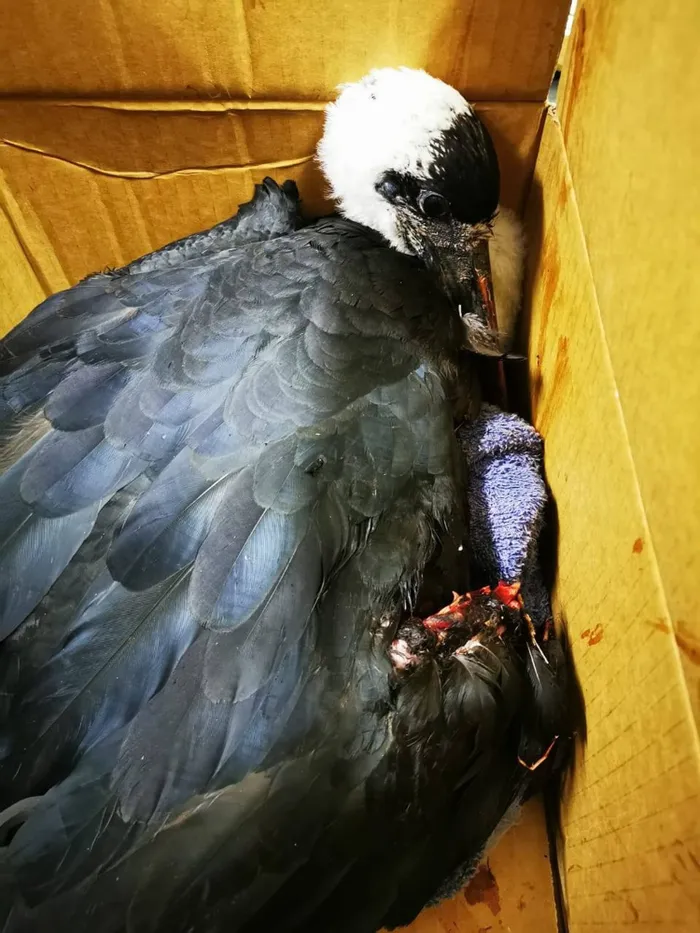Stork put down after collision with plane at King Shaka International Airport

A woolly necked stork had to be euthanised at the Centre for Rehabilitation of Wildlife (CROW) after colliding with a plane at the King Shaka International Airport. Picture: CROW A woolly necked stork had to be euthanised at the Centre for Rehabilitation of Wildlife (CROW) after colliding with a plane at the King Shaka International Airport. Picture: CROW
A woolly necked stork had to be euthanised at the Centre for Rehabilitation of Wildlife (CROW) after colliding with a plane at the King Shaka International Airport.
CROW primate manager Tayla Hawkins said the stork was recently dropped off by an airport employee. The bird had sustained two breaks and multiple smaller fractures in its right wing. The stork's elbow and wrist joints were completely shattered and unfortunately irreparable.
Hawkins said these kinds of breaks cannot be fixed by pinning as the break was not clean, and multiple fractures throughout the wing had left shards of bone in the bird's transport box.
“We made the decision to humanely euthanise as he was in such immense pain and the possibility of this wing ever being able to fully function again was almost impossible,” Hawkins said.
She said as bizarre as a plane strike may sound, these situations are not uncommon. Birds and bats may fly into a plane or get sucked into one of its engines. Although most bird strikes happen within 200m above ground, Bird Life SA and the Airports Company SA (Acsa) have initiated a Wildlife Hazard Management Programme at airports across the country.
“This allows for regular monitoring and species identification for those involved in these strikes and how to prevent future strikes from occurring. Specially trained dogs, fake birds and drones are often used in deterring wild birds from the runway,” Hawkins said.
She said that in the event of an injury to any large bird, the best thing to do was cover the head of the bird with a piece of material.
This immediately calms it and stops it from further injuring itself or biting the rescuer. CROW uses baby socks with the toe section cut open as this is a comfortable fit for most large birds such as geese, hadedas, herons or storks.
Acsa’s comprehensive GIS wildlife management system has been upgraded to reduce the risk of costly and dangerous bird strikes.
Acsa has introduced hand-held computers with integrated global positioning systems for data collection.
“Since its implementation, Acsa has been able to compile valuable statistical information, determine trends and create compliance reports” said Mike Steyn, a GIS consultant to the company.
Daily News
Related Topics:
